We’ve had a steady sort of weekend, short walks with Meg because she’s pulled a muscle in her right rear leg, so she’s a bit stiff till she gets going. It’s slowly getting better, though.
With wood getting harder and harder to find, we topped off the solid fuel stocks yesterday, taking half a dozen bags of Excel off fuel boat Auriga.
Ex GUCC and BW maintenance fleet NB Auriga
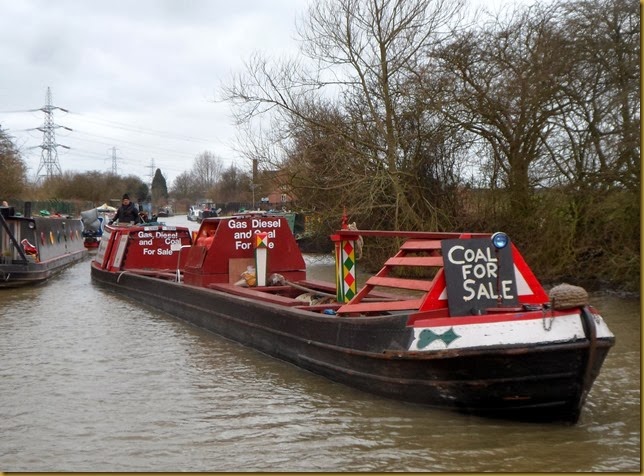
Most of the walking around Hawkesbury involves some sort of post-industrial landscape. Alongside the towpath there’s a wilderness of stunted bushes, briar and mossy, boggy areas, probably spoil from the several collieries around the junction. Across the canal, near where a new apartment development has sprung up, the site of one of the shafts of the Coventry Colliery is marked by a large depression.
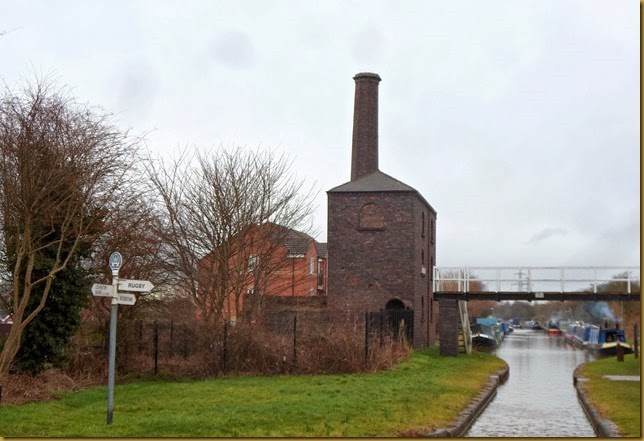 Alongside the junction the old engine house used to contain a Newcomen atmospheric steam engine, installed for the dual purpose of pumping water from the mines and supplying the same to the canal. The engine, named Lady Godiva, had already pumped water from the Griff Colliery for a century before being moved to Hawkesbury. Although disused since 1913, the engine wasn’t removed until 1963. It’s now in a museum in Dartmouth, Thomas Newcomen’s birthplace.
Alongside the junction the old engine house used to contain a Newcomen atmospheric steam engine, installed for the dual purpose of pumping water from the mines and supplying the same to the canal. The engine, named Lady Godiva, had already pumped water from the Griff Colliery for a century before being moved to Hawkesbury. Although disused since 1913, the engine wasn’t removed until 1963. It’s now in a museum in Dartmouth, Thomas Newcomen’s birthplace.The classic shot from the top of the cast-iron junction bridge, the Coventry Canal on the left, the Oxford Canal through the stop lock on the right.
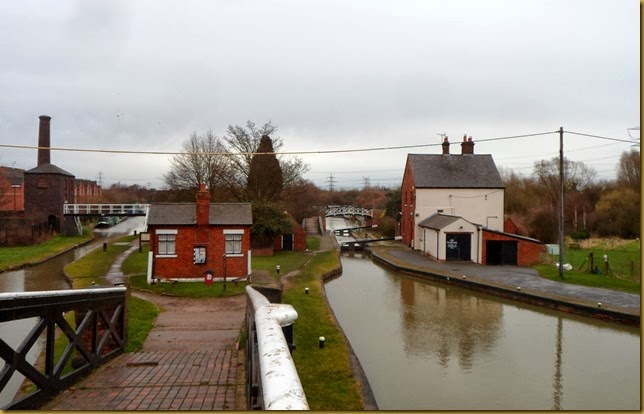
We moved away from our mooring at around half-past nine, filled with water then pulled onto the service wharf just south of the junction. Loos and rubbish emptied, we had 30 minutes or so to wait for our Tesco delivery.
Groceries stowed, we got moving again at 11:30.
Bridge 11a carries metal sculptures entitled “Wings Over Water”
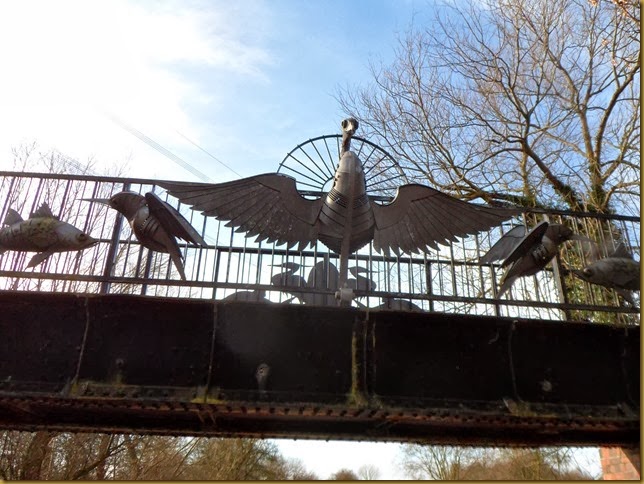
The current footbridge replaces a mineral railway line carrying coal from Wyken Colliery to the main line.
Under the M6, supporting pillars stretch into the distance
The canal does a sharp right hander at Longford Wharf.
Longford Wharf
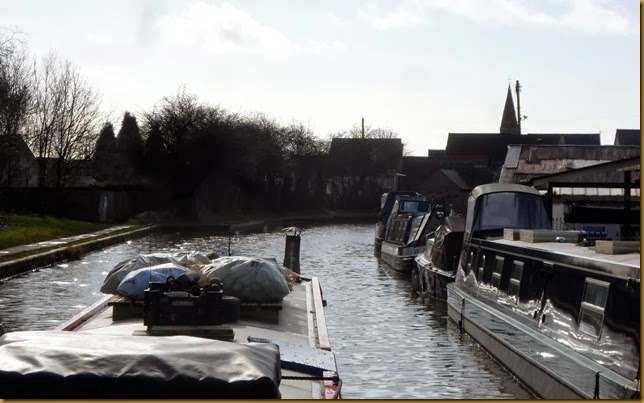
The wide section here marks the original junction of the Oxford and Coventry Canals. Both routes were built within a ten year period, but disagreements over toll charges for various cargoes led to the junction being sited here, at Longford. The canals ran parallel to each other, a few yards apart, for about a mile. This peculiar state of affairs continued for 25 years, until a compromise was reached and the junction at Hawkesbury constructed. The old line of the Oxford to Longford has been infilled.
This isn’t the first time we’ve been down here. Some time ago we came part way to shop at the large Tesco near Bridge 8. Then we carried on a little further to wind at Bridge 6a and return.
Bridge 6a, the limit of our earlier exploration.
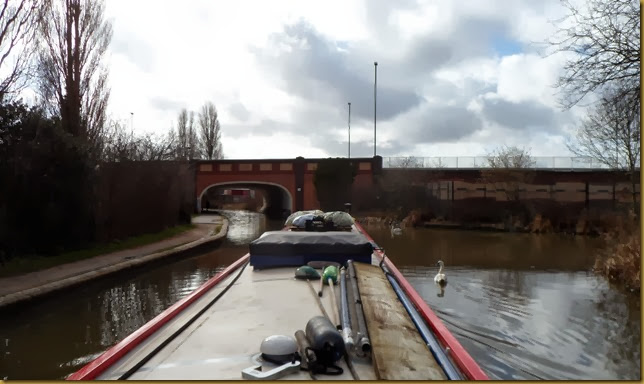
Stoke Heath Basin is a compact residential mooring, but I can’t find out what it’s original function was.
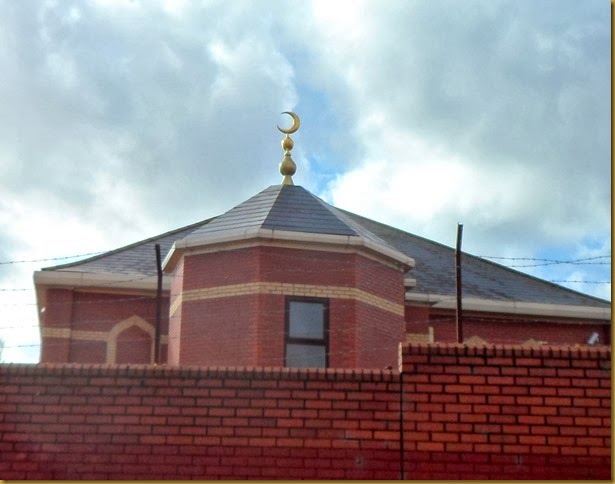
The canal winds extravagantly for the next mile, clinging onto the contour to avoid the need for locks. It passes through a mostly Asian settled area….
…before it leaves the residential fringe and moves into an area of newer development on old factory sites.
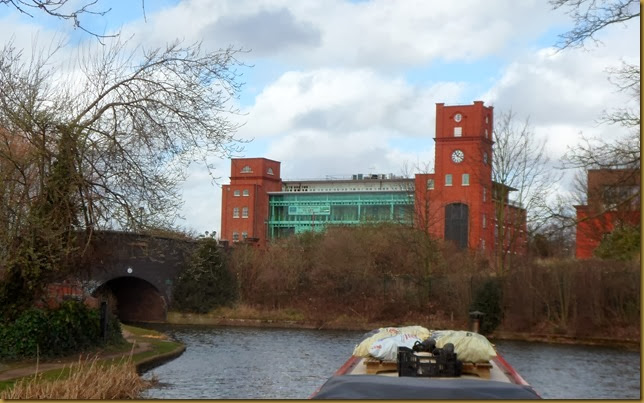
Coventry is known as the home of the British motor industry, but it also had a thriving textile industry in the 19th century.
Quaker brother John and Joseph Cash wanted to give weavers a degree of independence, so planned a square of one hundred three storey terraced houses, the top floor of which housed looms. These were driven by a central steam plant for each row. In the end only two sides of the square were built, in the late 1850’s, just 48 of the planned hundred.
When the industry went into decline the rows were converted into a factory, with the accommodation closed. The houses were bought and refurbished by a housing association in 1984.
Cash’s Hundred Houses.
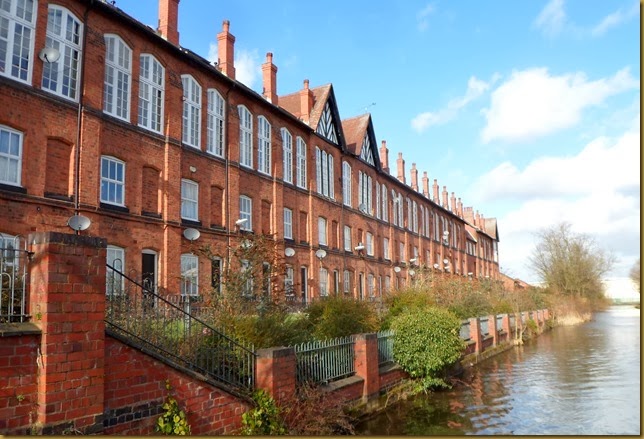
The large windows on the top floor gave good light by which to work. There’s only 37 houses left now, after the depredations of the Luftwaffe in 1940.
There’s a fancy new footbridge spanning the canal at Electric Wharf, the site of the former Victorian power station.
Electric Wharf Footbridge
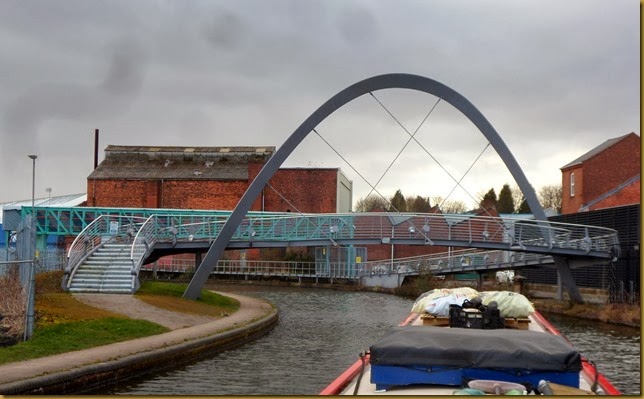
The power station buildings have been converted into eco-friendly apartments and offices.
See the grey cloud starting to build? I thought we might make the last 10 minutes into the basin, but it was not to be…
Under Bridge 1 in a heavy shower.
Into the basin….
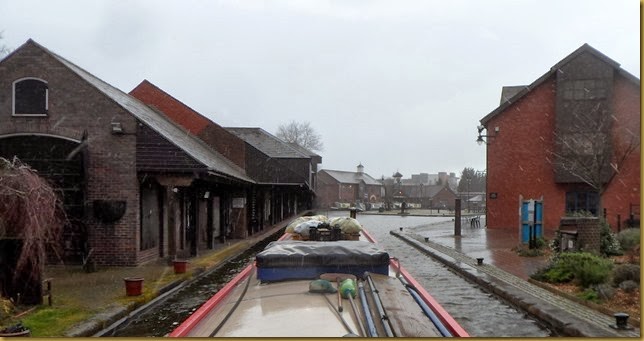
…and moored up just in time for the sun to come out again!
Tomorrow I’ll satisfy my hankering after old machinery with a trip to the transport museum, maybe followed by something a little more spiritual at the cathedral.
Locks 0, miles 5¾
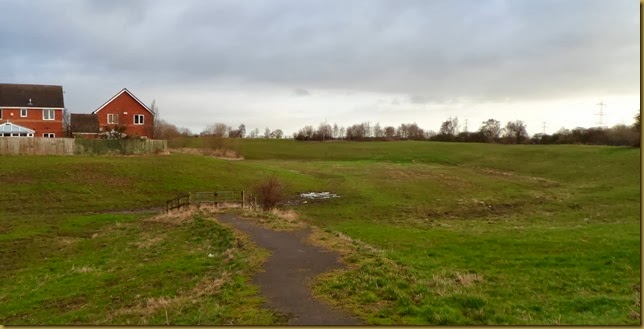
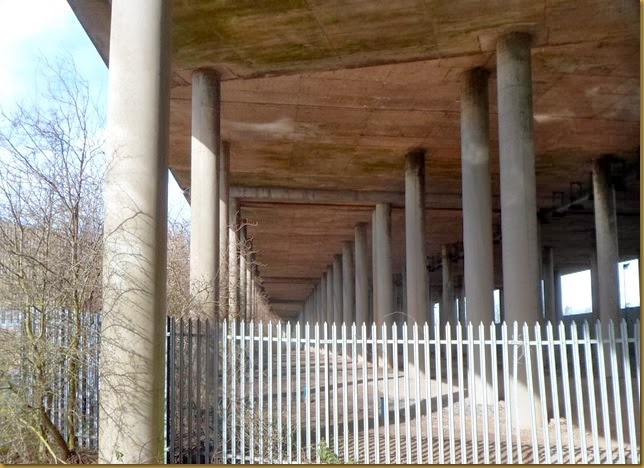
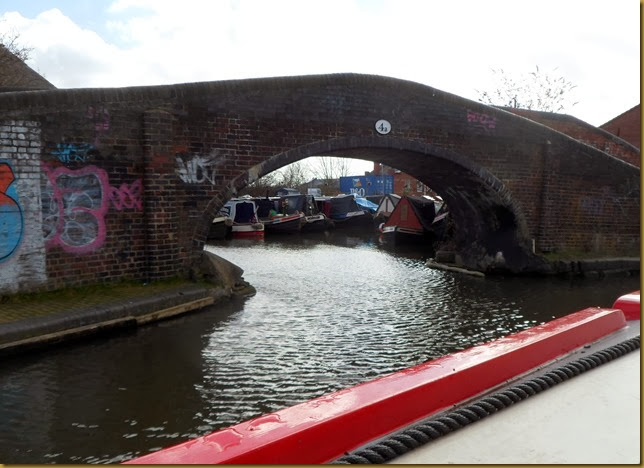

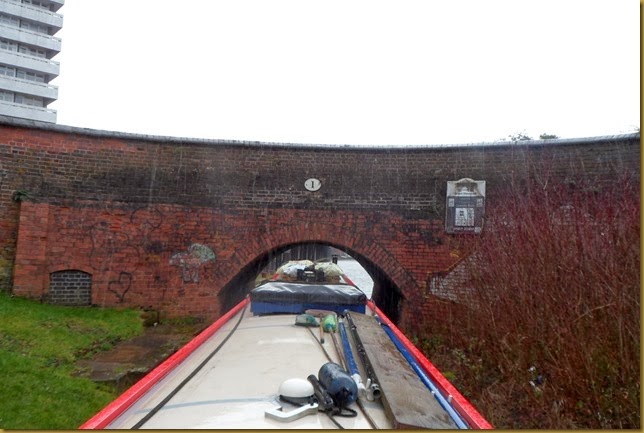
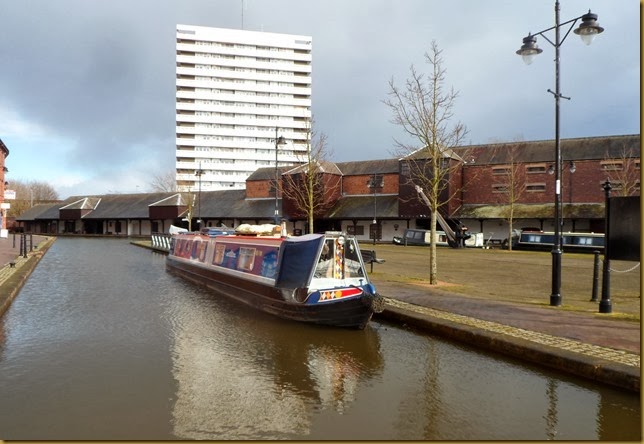
1 comment:
Hi Geoff & Mags,
Hope you are both keeping well and that Meg gets better soon :)
Have you seen this...
http://www.theherbert.org/news/j-and-j-cash-ltd
sad news indeed!
Kevin & Harry
Post a Comment